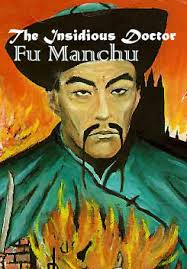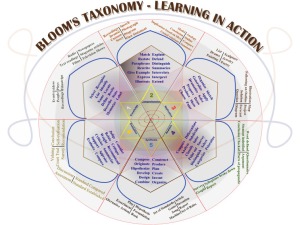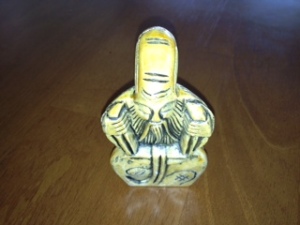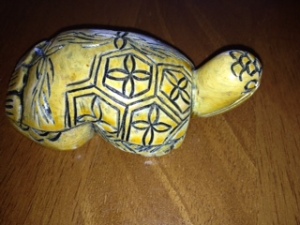Questions About Art – Lessons Learned
At the completion of Week 1 of Art & Inquiry, here are some pearls of wisdom for sharing….
Sandra Sinfeld does an excellent recap of the week’s reading in her Last Refuge Blog.
The Art Project at the Google Cultural Institute allows you to get an extremely close look at over 40,000 pieces of artwork in a way that is impossible at a museum. Check it out. It is amazing.
Effective Questioning Strategies from TeachThought dovetails perfectly into this week’s reading. They expand the concept by using the framework of Bloom’s Taxonomy. “For effective questioning in the classroom, teachers should ask questions relating to each category. Following is Bloom’s Taxonomy listed from the least to the highest order of thinking skills, and including example verb prompts that might be used to display each skill.”
In Dave Barr’s That’s Great Blog, he utilizes the MOMA worksheet Questions About Art to describe an object in his museum.
That inspired me to do the same. Rarely do we take the time to make such observations. I chose an object that is my husband’s good luck charm.
1. Describe the object. Think about line, color, texture, pattern, and shape. Can you
figure out what it is made of, or how it was made?
This figurine is 3.5 inches long, 1.25 inches high. It looks like it is made of sand colored soap stone. It is shaped like a turtle and has a black flower design etched in its back, and black scales etched in its head and feet. When you turn the turtle over, there is an old man carved into the underside, with a base that allows “him” to sit erect. I think it may have been hand carved in China.
2. What do you know about this object? What is familiar? What is unfamiliar?
I chose this object because it intrigued me. My husband purchased it from the Om Gallery before travelling across country as his good luck charm. The shape of the turtle is familiar. The fact that the artist carved an old man into the underside of the turtle’s belly is something that I have never seen before. I
3. List words or ideas that come to mind when you look at this object. Why does this
object make you think about those words?
The figurine could be used as a paperweight because it is made of heavy material. This makes the object useful as well as decorative. The carving is intricate. The design is clever. “Things are not as they appear.”
4. What associations can you make from it? Why?
The carving of the man reminds me of “Fu Manchu.” I think that is because of the mustache as well as the eyes. Because of this, I concluded that it must have been made in China. The color and feel of the object, as well as the etching make me think that the material is soapstone. The duality of the piece reminds me of the koan “a paradox to be meditated upon that is used to train Zen Buddhist monks to abandon ultimate dependence on reason and to force them into gaining sudden intuitive enlightenment.” It could also be based on the Japanese art form of “Netsuke, evolved over time from being strictly utilitarian into objects of great artistic merit and an expression of extraordinary craftsmanship. However, this contrasts with the theory that the piece was made in China.
5. What questions would you like to ask about this object? Can you guess at the answers to any of them?
I would like to know if the artist knew before he carved it if he was going to add the man, or if the idea came after he carved the turtle. I would like to think that the artist saw the man after he carved the turtle.
The man is carrying a book in each hand. What are the titles? The Tao Te Ching and Zen and the Art of War.
6. In one sentence, describe the most interesting thing about this object.
What appears to be a simple paperweight is a clever piece of art.




Great post – really insightful – and interesting – thanks Cathleen!